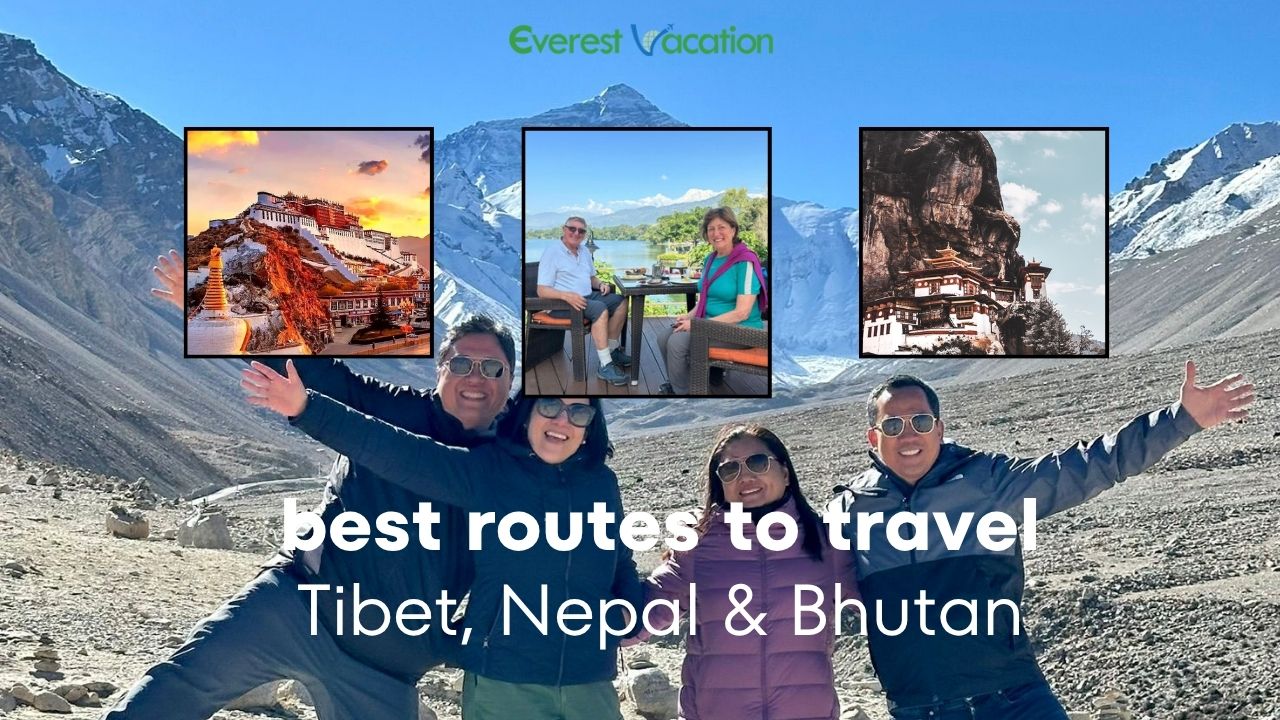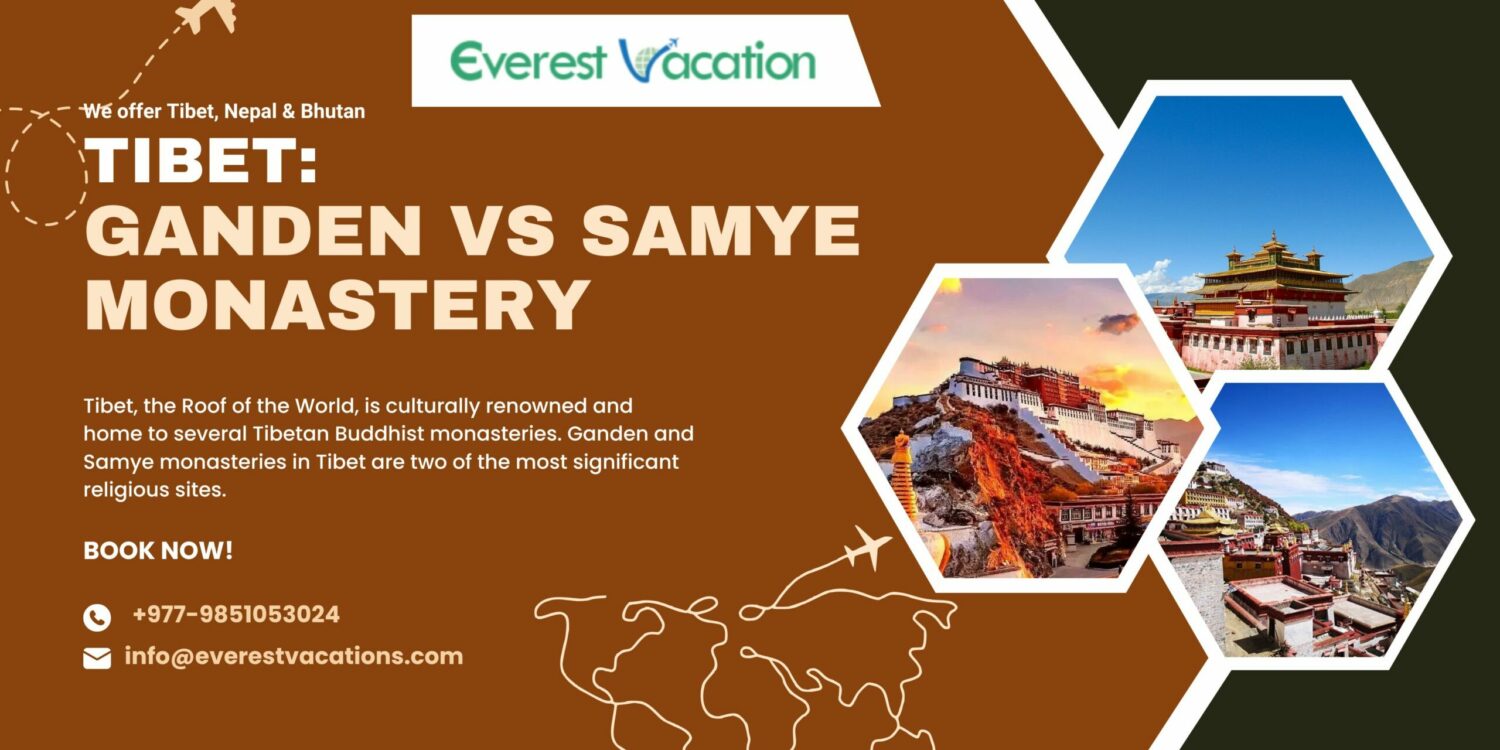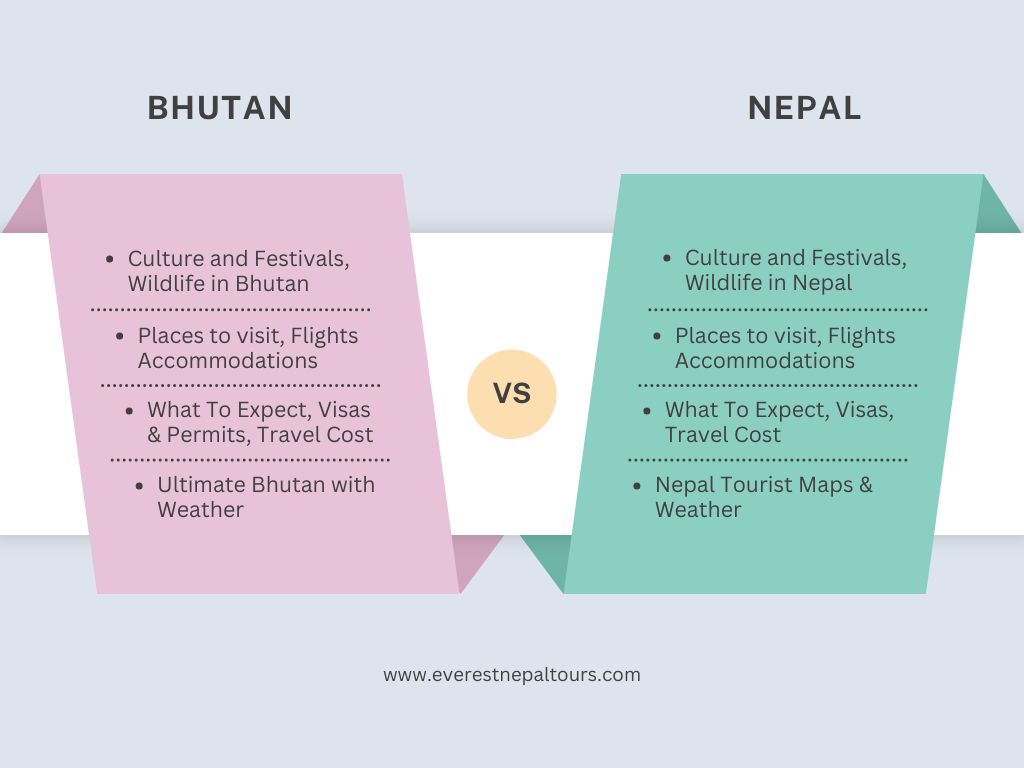Nepal full of rich old culture, traditions and customs of various communities and religions makes this country lively, enjoyable and interesting the old saying in Nepal festival never ends, even every week or month some religious rites and celebrations takes even though it small or big, it super festival for some communities.
Nepal with its dramatic change in topography, landscapes and temperature and the people that habits from low land of terai, mid hills to high mountains region, where they have their own way of living and important occasions, so in Nepal festivals continues with pomp and ceremony during these happy occasions and events.
Here are the main events and festivals tour of Nepal:
Mid January – Tol or Tamu Lhosar of Gurung tribe community as it is same as other Tibetan New Year, however due to habitation, climatic conditions observe this festival around mid Janurary as per Luna calendar.
Mid January ( as per Luna Canlendar) – Maghe Sankranti, a celebration of the harvest festival, people take bathe and dips in rivers and worship the Sun God especially in the holy river. The dip is said to purify the self and bestow “punya”. Special puja is offered as a thanksgiving for good harvest. According to folklore, girls who take the holy dip get handsome husbands and boys get beautiful brides.
Jan 29 – Martyrs Day: An Anniversary, in honor and respect of the martyrs and late hero’s who died and suffered for the nations and Nepalese people.
Mid Feb – Sonam Lhosar: A New Year of Tamang community as it is same as other Tibetan New Year, however due to habitation, climatic conditions observe this festival around mid February as per Luna calendar, the new year with animal symbol year 2015 (Sheep Year).
Feb 18 – National Democracy Day: A day to mark the democracy after the overthrown of aristocrat Rana rules and regime, which Shah kings took back the power from Rana after they rule the country for more than 100 years.
At present a Nepal a Republic Nation.
Mar 10 ( as per Luna calendar) Shiva Ratri
Lord Shiva is one of Nepal’s most popular gods. During Maha Shivaratri, his “Great Night”, followers throughout the Indian sub-continent crowd the Pashupatinath temple to worship him. Colorful Sadhus, the wanderings sages who emulate Shiva, rub ashes over thier bodies, give lectures to disciples, meditate, or practice yoga. Devotees pray to Shiva’s image inside the temple at midnight and may queue for upto six hours to look at the image. Bonfires are lit, neighbors and friends share food, and devotees enjoy two days and a night of music, song, and dance throughout Pashupatinath complex and in the streets.
There will be elaborate arrangements enabling sadhus and devotees to pay darshan to the Lord Pashupatinath during the Mahashivaratri.Makeshift shelters will be provided to visiting Sadhus and pilgrims from Nepal and India who are expected arrived at the Pashupatinath area. The routes leading to the temple have been barricaded in order to regulate the entry and exits to the temple. Medical camps will be set up and medical services will be available round the clock for the needy.
Mahashivaratri, or the night of Shiva, the Hindu god of destruction, falls on Wednesday night. It is the biggest festival observed in Pashupatinath.
Around Mid Feb ( as per Luna calendar) – Gyalbo Lhosar, a New Year celebrated among Tibetans and Sherpa communities although same as Gurung and Tamang with same year of animal symbol the sheep in 2015 AD.
Mid or end of March – Holi (Fagu Purnima) – Festival of colors,
Holi marks the end of winter and rejoicing over the start of the spring time. It is the best time and season to celebrate; People play with different colors.
April 10 – Ghode Jatra
Visitors are often amazed by the fine horses of the Nepalese army, and Ghode Jatra is a time for the most graceful of these animals to perform before the public eye. Legends relate that this “horse festival” was begun after the Kathmandu people buried a demon under the soil of Tundikhel showgrounds. They say that he may rise again and cause worry to the world if he is not trampledon by horses each year. So every spring, this victory over evil is celebrated in the Valley by organizing palanquin processions and a grand displayof showjumping, motorcycling feasts, and gymnastics.
April 14 Nepal New Year Day – 2072 Bikram Sambat
A Nepalese New Year day observed in a grand way. One of the great Bisket Jatra happens in Bhaktapur which is not to be missed.
Mid or end of April: Ram Nawami.
Observed as a sacred day on which Lord Rama incarnated on this earth to do away with the evils. Devotees keep fasting and worship lord Rama.
Early or Mid May – Tiji Festival in Lo Manthang-Mustang
Teeji- The Chasing of the Demons
On this festival the lamas perform a centuries-old ceremony to chase demons from Lo Manthang. Gripping human skull-tops laced with streamers, lamas chant prayers and perform, almost 50 separate religious dances. They are interrupted now by masked demons who flail wooden swords at the frightened spectators.
May 25 (May differ from Luna calendar):
Buddha Jayanti (Lord Buddha birth anniversary)
The ever benevolent Buddha was born in Nepal, and the religion is preached is the second most popular in the Kingdom. On a full moon day, the Lord’s birth, enlightment, and salvation are applauded throughout the valley with celebrations. Swoyambhu and Bouddhanath Stupas are prepared for the oncoming festivities several days in advance. Monasteries are cleaned, statues are polished, bright prayer flags waft in the breeze, and monks prepare to dance. On the Jayanti day, people reach the stupas before down, go around them and give offering to the many Buddha images there.
On the final day, in a nearby field, courtiers fire ancient muskets as a high lama shoots an arrow at a red demon effigy laid on a ragged tiger skin. He tosses five more demons into the sand to signify the exorcising of the city.
Mid May: Saga Dawa Festival at Tarboche at the base of Mt. Kailash
Saga Dawa which is the day of Buddha’s enlightenment, nirvana, the monastery at Tarboche, the base of Mt. Kailash in Tibet celebrates this big festival for four days. During this festival you can see the vivid way of Tibetan pilgrims that joins from all over the Tibet and celebrates fire puja, Lama Dances, Sand Mandala puja and finally the unrolling of the giant silk thanka. This is the oldest scroll painting in Tibet, dating back 1000 years and measuring approximately 40 x 60 m. Circumambulating Mt. Kailash during Saga Dawa, one gained a merit of 100 thousand times due to the sacred month of Saga Dawa.
Mid August: Nag Panchami
Nag Panchami is the major sacred festivals celebrated in Nepal by the Hindus. It is just to show respect to the snake mentioned in the ancient sacred Hindu scriptures. During these festivals snakes are bathed with milk, haldi-kumkum is sprinkled on their heads. Milk and rice is offered as Prasad to the snakes. Cow’s milk is an indispensable item to worship the Nags. It’s believed that if Nags are enraged; they can make us lame, blind, and etc defects. That’s why Nags are thought to be very dangerous creatures. So they are worshipped on this day by the people to escape from their fear. It’s believed that; if some worships nicely to the Nags on this day; he will be free from any kind of snake’s bite. So people worship to Nags for this reason as well on this day. Nags are believed to be the sources of water so the scriptures explain that they stay inside the sources of water from where it flows. So people worship to the spouts and springs’ sources in the belief of Nags residence.
Mid or end August (as per Luna Calndar): Janai Purnima and Gai Jatra:
A most colorful religious procession of cows and people with peculiar head dress painted as figure of cows goes round the market places. Relatives of deceased of that year send religious groups to join the precession. The ‘Gai’ or cow is holy to Hindus. She represents Laxmi, the goddess of wealth, and guides the souls of the departed to the gates of the Netherworld. But Gaijatra is not a somber occasion. Satire, jokes, fancy costumes, and colorful processions are the order of the day as people recall how an eighteen-century king rallied his people to cheer his queen upon the death of their son. Those who have experienced the death of close ones during the past year share their sorrow and take comfort in the fact that the Gai (cow) has safely transported the departed souls on their afterlife journey.
Young men wearing women’s saris, children dressed up as cows, and whimsical characters of all sorts fill the streets.
End August- Shree Krishnna Janmastami
Hindus observe it by remaining awake the whole night performing religious dances and singing in the praise of Lord Krishnna.
Around September: Teej – festival for women:
Teej is the fasting festival of women in Nepal. Married women observe Teej fast to honor Lord Shiva and for long and healthy life of their husband. Unmarried girls also observe fast on this day for a good husband. Teej celebrations last for three pious days. Traditional dances and songs form an important feature of Teej celebrations. Red color is considered auspicious for women observing Teej fast and so most of them dress up in red or bridal clothes.
September Mid – Indra Jatra:
A week long festival begins by hoisting Lord Indri’s flag (Indradhoj) at midnight and faces of Bhairawa deities are displayed in important public places.
Indra King of heaven and controller of the rains have once again blessed the Valley. As the end of the monsoon nears, farmers look forward to a rich harvest, everyone is grateful to the diva for his help. For eight days, Kathmandu’s Durbar Square is the focus of a great celebration fit to “flatter the King of Heaven”. Indra’s dhwaj, or flag, is erected on the first day. It is said that many centuries ago, Indra’s mother needed specially-scented flowers but could not find them in heaven’s gardens. Indra discovered parijat flowers in the Kathmandu Valley and tried to steal them for his mother. He was caught and imprisoned by the Valley people. When Indra’s mother came searching for him the people were appalled by what they had done. They released Indra and dedicated one of the most colorful festivals of Nepal to him to appease his anger. Masks and statues representing Vishnu, Bhairab, and Shiva are shown to the public, and the Goddess Kumari witnesses the special occasion from her chariot. Indra is thanked for the rains and assured once again that he is respected in the Kathmandu Velley.
Early or Mid October- Dasain: The great and big Festival of Nepali.
Dasain is the longest and most favorite festival of Nepal. Everyone stays home with their families, all offices and schools are closed. The skies of Kathmandu are filled with Kites and the marketplaces are filled with farmers bringing their goats, buffaloes, ducks and Chickens to sell. The animals are to be sacrificed on the night of ‘Kal Ratri’ to goddess Durga to celebrate her victory over evil. On the day of Dasami, everyone puts on new clothes and goes to honor their family elders, where they received large red ‘Tika’ of vermilion paste on their foreheads. In the following days of Dasain, families and friends unite, feasts are consumed, blessing is imparted and gifts are exchanged. Nepal’s most beloved festival ends with the full moon.
October (1st or 2nd week) – Ghatasthapana linked with Dashain:
Beginning of the greatest festival ‘Dasain’, lasts for nine days. Sowing of maize and barely called Jamara in local lanuguage.
October (mid or early) Phulpati linked with Dashian:
Real festival becomes visible. Brahmins go to Gorkha Durbar and bring flowers, etc. from the shrine there and it then placed in Pooja room of Hanuman Dhoka. His Majesty and other members of the Royal family witness the Army parade and accept the Guard of honor.
October (as per Luna calendar)- Durga Puja (Maha Astami)- mass animal Sacrificing day:
Eight day of the festival known as ‘Kalratri’. Animals (goats, buffaloes and ducks and chickens) sacrificed in the temples of Goddess Durga and also at homes. Offering of sacrifices continue on the ninth day too.
October (mid or end) – Mahanavami:
October (mid or end) – Vijaya Dasami (Tika): The final and main Dashain event.
Elders and seniors in each Hindu house mark the foreheads of juniors wutg ‘Tika’ or red colour mark. Respectable relatives are visited. Feasts are held. Lots of festivities.
October (mid) – Kojagrat Purnima
November (as per Luna calendar) – Tihar (festival of lights):
This is second big festival of Hindus in Nepal. It is also known as festival of lights, is a time of candlelight, tinsel decorations and festive colored sweets. On different days, there are offerings and small celebrations for crows, dogs, cows and oxen. On the night of Laxmi Puja, garlands are hung and lamps are lighted to invite Laxmi, the goddess of wealth into the home and offices. Mha Puja, the New Year’s Day according to the Nepal Era, is the day of the self, when people gives themselves blessing to remain healthy and happy for the rest of the year. Bhai Tika, the last day of Tihar, is the day when sisters make offerings to their brothers. The ritual of breaking wall nuts, putting on garlands of makhamali flowers and encircling brothers in rings of mustard oil protect them from Yama, lord of the Netherworld. The first day of the festival people worship ‘crows’ and on the second day ‘dog’ is worshipped in the morning and is given good food to eat.
November ( as per Luna Calndar) – Laxmi Puja:
Festival of Lights- Worship of Goddess of Wealth celebrate with great pomp and grandeur in all over the Kingdom of Nepal.
Mid or end of November – Gai Puja (Gobardhan Puja):
Hindus worship cows and regard this animal as mother.
November ( as per Luna Calander)- Bhai Tika: (Brothers and sisters thanks giving)
Last day of the ‘Tihar’, sisters mark their brothers’ forehead with Tika ,garland, sweets and pray for their long life and prosperity.
1st week of November – Chath Parva:
is an ancient Hindu festival and only Vedic festival dedicated to the Hindu Sun God, Surya, also known as Surya Shashti. The Chhath puja is performed in order to thank Surya for sustaining life on earth and to request the granting of certain wishes. The Sun, considered the god of energy and of the life-force, is worshiped during the Chhath festival to promote well-being, prosperity and progress. In Hinduism, Sun worship is believed to help cure a variety of diseases, including leprosy , and helps ensure the longevity and prosperity of family members, friends, and elders.
The rituals of the festival are rigorous and are observed over a period of four days. They include holy bathing, fasting and abstaining from drinking water (Vratta), standing in water for long periods of time, and offering prasad (prayer offerings) and aragh to the setting and rising sun.
Nov mid (as per Tibetan lunar calendar) Mani Rimdu in Tengboche, Mani Rimdu in Chiwong Monastery – Everest region:
This is a Sherpa festival celebrated during the fall at Tengboche Monastery in the Everest region. For 5 days, Lamas and Sherpas gather for “the good of the world”. There are plays, masked dances, prayers, and feastings. Demons are quelled and the pious rewarded. The days are colorful and trips to the Everest region are very rewarding.
1st week December: Bibah Panchami at Janakpur:
All the people of the Hindu world know the story of the marriage of the hero Ram and the princes Sita, as told in the epic Ramayana. King Janak, sita’s father, proposed at a test of strength for the suitors of his daughter: to string the great bows of Lord Shiva. Warriors, Kings and chieftains came from afar, but no man could even lift the bow. Ram lifted the bow with ease and when he tried to string it, the bow shattered into pieces. Ram and Sita were married in Janakpur, now in southern Nepal, and their marriage is celebrated to this day. Each year, idols of Ram and Sita are brought out in procession and their Hindu wedding ceremony is re-enacted during a weeklong religious fair. Bibah Panchami reflects the devotion of Hindus to Ram, perhaps the most popular among the incarnations of Vishnu, and to Sita, the model of the ideal Hindu woman.



